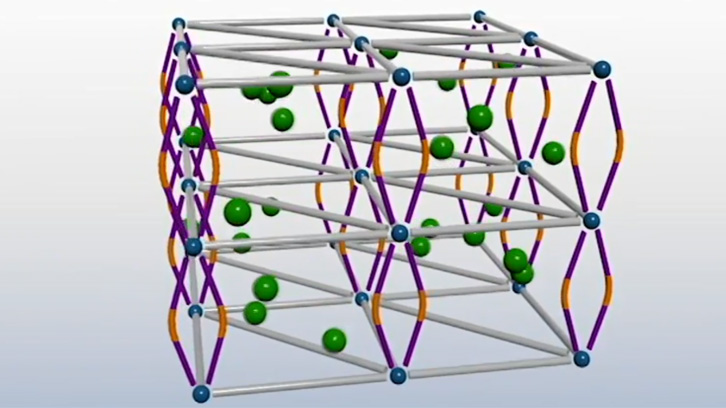Stimuli-responsive materials that switch from nano-porous 3D structures to new non-porous 2D structures and vice versa using spherical ligands

So called “stimuli-responsive” or “smart” materials have the ability to go through conformational changes or phase transitions as a result of external chemical or physical stimuli. Such responsiveness to specific stimuli or local environment is typical for biomolecules in nature but it is particularly difficult to achieve artificially. Such materials form the corner stone of developing intelligent technologies and are at the forefront of strategies addressing a number of global challenges.
Porous Coordination Polymers (CPs) or Metal-Organic Frameworks (MOFs) are a class of porous crystalline materials formed by the assembly of metal ions or metal clusters with different types of bridging organic linkers or ligands. MOFs can find applications as membranes for selective gas separation or gas adsorption, as catalysts for chemical reactions, as encapsulation and drug delivery for active substances or hazardous waste adsorption. Scientists around the world are trying to develop stimuli-responsive flexible porous MOFs, since the advantages and potential application fields of flexible materials are highly desired.
Scientists at the Institute of Materials Science of Barcelona (ICMAB-CSIC), have developed a first example of a 3D nano-porous materials that go through conformational changes and transform into a 2D non-porous structure as a result of an external stimuli, and then can shift to the original 3D nano-porous structure when the stimuli is reversed. In this study, the use of spherical shaped icosahedral boron-based molecules as linkers instead of planar ones could help in stabilizing the flexible structures. The spherical shape of the ligands is the key factor that enables the structures to go back to their original shape, allowing for the rearrangement of the different parts, and without collapsing the whole structure. The idea of spherically shaped linkers avoiding collapse of the structure can also be understood like this: two layers will roll over each other if separated by spheres; whereas they will collapse if non-spherical pillars are used.
As a proof of concept for potential applications, encapsulation of fullerene molecules has been achieved by trapping them during the reversible 2D to 3D transition, while the structure is being formed. The observed process constitutes a new way to encapsulate large molecules that cannot easily diffuse into the porous material.
Vídeo with a description of the new materials.
Institute of Materials Science of Barcelona (ICMAB-CSIC)
Campus de la Universitat Autònoma de Barcelona
References
Fangchang Tan, Ana López-Periago, Mark E. Light, Jordi Cirera, Eliseo Ruiz, Alejandro Borrás, Francesc Teixidor, Clara Viñas, Concepción Domingo, José Giner Planas, An Unprecedented Stimuli Controlled Single-crystal Reversible Phase Transition of a Metal-Organic Framework and its Application to a Novel Method of Guest Encapsulation, Advanced Materials. 30 May 2018. DOI: 10.1002/adma.201800726


